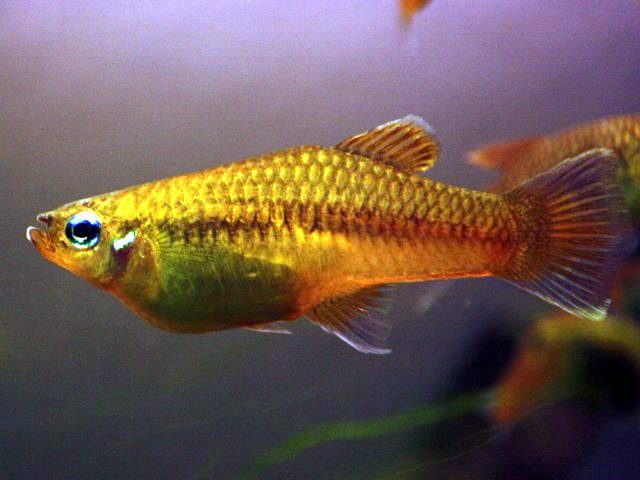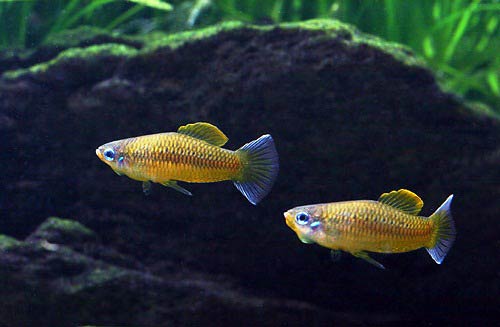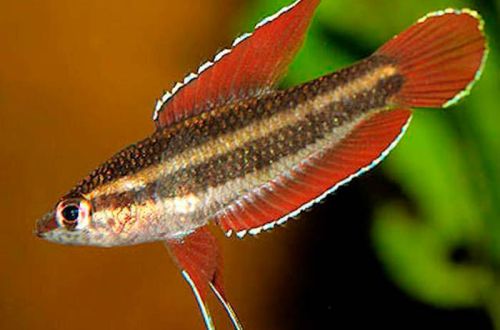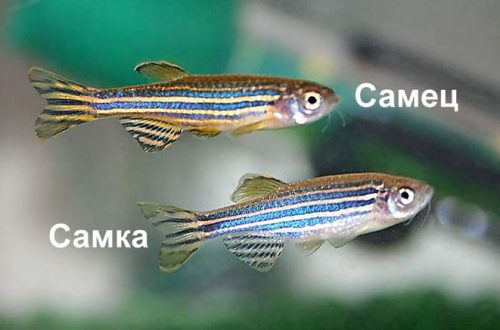
Priapella blue-eyed
Blue-eyed Priapella or Priapella intermedia, scientific name Priapella intermedia, belongs to the family Poeciliidae (Pecilian or Gambusian). Easy to keep and breed unpretentious fish. It can be an excellent choice for beginner aquarists.

Contents
Habitat
Comes from Central America. It is considered endemic to the basins of the Coatzacoalcos and Papaloapan rivers, located in the southeastern regions of Mexico. The rivers originate in the Sierra Madre mountains, but for a large part of their length they flow through gently sloping terrain among the rainforest, forming wetlands. A typical biotope is a shallow backwater with dense coastal vegetation with substrates of sand, stones, rocks, fallen leaves, branches, etc. Although water is usually acidic in swamps, in this area, due to the proximity of mountains, it has high values of hydrochemical parameters .
Brief information:
- The volume of the aquarium – from 60 liters.
- Temperature – 22-28°C
- pH value is about 7.0
- Water hardness – medium and high hardness (10–20 dGH)
- Substrate type – any
- Lighting – moderate or bright
- Brackish water – no
- Water movement – light or moderate
- The size of the fish is 5–7 cm.
- Nutrition – any food with herbal supplements
- Temperament – peaceful
- Content alone, in pairs or in a group
Description

Males grow up to 5 cm in length and have a gonopodium reproductive organ – a modified anal fin. Females are noticeably larger and fuller, especially during the spawning season. The color of the fish varies from gray to yellowish. A distinctive feature, reflected in the name of the species, are blue eyes.
Food
The basis of the daily diet should be feed with a high content of plant components. A good choice would be specialized commercial products in the form of flakes, granules. Artemia, bloodworms, daphnia and other invertebrates in frozen or live form can diversify the diet.
Maintenance and care, arrangement of the aquarium
The optimal sizes for a group of 4 fish start at 60 liters. The design should combine areas of open water for swimming with areas of dense aquatic vegetation. The latter will be an excellent natural hiding place for fish during breeding. The rest of the design elements are selected at the discretion of the aquarist.

The key to successful keeping of blue-eyed Priapella is high water quality (absence of contaminants) and keeping the hydrochemical composition within the acceptable range. To this end, they install the necessary equipment and carry out regular maintenance of the aquarium to remove organic waste (food residue, excrement, etc.) and replace part of the water with fresh water.
Behavior and Compatibility
Peaceful friendly fish. Compatible with most freshwater species of similar size and temperament capable of living in high GH environments. They can live both alone and in large clusters.
Breeding / breeding
In the artificial environment, the breeding season is not pronounced; spawning can occur throughout the year. In viviparous species, the development of fry occurs in the body of the female, they do not spawn. The incubation period is long, taking about 1 month. At this time, the female often hides in thickets of plants, and about a dozen fully formed fry about 7 mm in size appear there. Juveniles are recommended to be transplanted into a separate tank to avoid predation by other fish.
Fish diseases
Finding the fish in a suitable habitat, getting them a balanced diet and free from external threats such as attacks from tankmates is the best guarantee against disease. The appearance of signs of illness can be a signal that there are problems in the content. Usually, bringing the habitat back to normal contributes to self-healing, but if the body of the fish has suffered too much, then medical treatment will be required. Read more about symptoms and treatments in the Aquarium Fish Diseases section.





